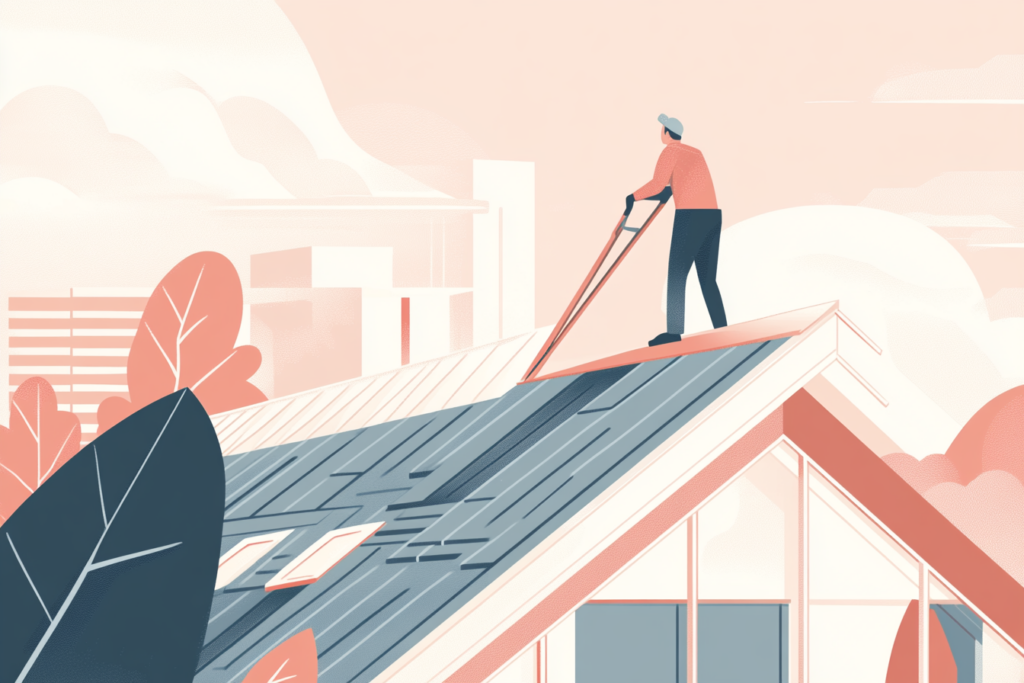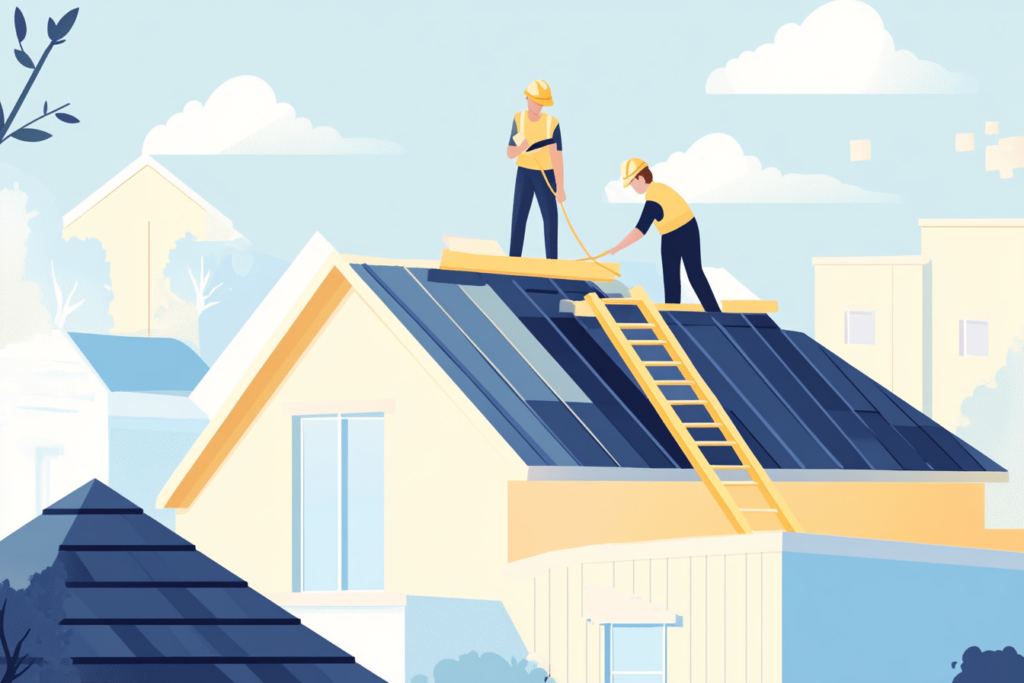According to the International Association of Certified Home Inspectors, a roof can last anywhere between 20 to 100 years. However, the average roof usually only lasts about 30 years. Ultimately, how long your roof lasts will depend on many factors, including the climate, roof material, maintenance, and more.
Surprising Ways Smart Families Waste Money at Home
Still, at some point in your life, there’s a good chance that you’ll need to go through a roof replacement. Considering the hefty price tag of this type of project (an average of $11,500), you probably want to know what to expect before you hire anyone. Keep reading for a complete overview and step-by-step guide to roof installation.
Signs Your Roof Should Be Replaced
Replacing your roof is an unavoidable project. Your roof protects your home, so if it’s showing signs of needing replacement, you can’t ignore it.
Here are some of the warning signs that you need a new roof:
- The roof appears to be sagging
- Shingles are curling or cracked
- There are bald spots in your roof where shingles are missing
- You have roof leaks
- Visible moss growing on the roof
- Dark streaks on the roof
- Your roof is more than 20 years old
8 Steps to Roof Installation

Sneaky Household Expenses You’re Probably Ignoring
You’ll need to hire a contractor to install your roof safely. A DIY approach is not recommended for many reasons, including the possibility of injury, the voiding of your home insurance policy, or damage to your home.
But just because you’re going to outsource this work doesn’t mean you should be oblivious to what will happen to your home. By doing your research now and fully understanding the roof installation process, you can keep track of your contractor’s work and understand the progress they’re making. You can also ensure they don’t skip any critical steps.
So, it’s time to learn more about roof installations. Here are the eight major steps you can expect when getting a new roof:
1. Get Permits
You’ll almost always need a city permit before you start installing a new roof. Additionally, your homeowners association (HOA) may require you to submit your plans and follow specific guidelines regarding roofing materials and styles.
The good news is that an experienced contractor is very used to these steps. They’ll handle getting your permit and creating a plan that fits any mandatory parameters.
2. Prepare the Worksite
As eager as you may be to get work started immediately, there is some preparation that needs to happen first. Your contractor will prepare the worksite by:
- Covering nearby plants, trees, and landscaping
- Delivering the materials and placing them in places in strategic places around the site
- Asking/advising that vehicles, trash cans, and other objects be removed from around the worksite
- Bring in and install safety equipment (such as harnesses) for workers
How Your House Is Bleeding Your Budget
3. Remove the Old Roof
Next is the roof tear-off. The contractor will remove the old roof materials, including the flashing, shingles or tiles, and underlayment.
4. Inspect the Roof Decking and Flashing
At this point, the contractor will inspect the entire roof area for signs of damage. Specifically, they’ll look for damage to the sheathing, visibly moist areas, or signs of mildew and rot.
If the contractor finds any damage, fixing these issues is unavoidable. After all, the last thing you want to do is put a brand new roof on decking that will soon fall apart. Your contractor will discuss a plan for fixing the issues before proceeding to the next phase of the roof installation.
5. Install the Drip Edge
Your roof needs a drip edge to prevent water from seeping into your gutters and home. Drip edges can be installed at different stages of a roof installation project, depending on where they are located on your roof.
If the drip edge is part of the lower roof, it’ll be installed before the underlayment. However, if it’s close to the side of your roof, installation will be after the underlayment.
6. Install the Underlayment
No, it’s time to install the underlayment. Underlayment is an additional protective layer of material, usually made of felt paper, between the wood roof deck and the exterior roofing material. This layer protects your roof from water, so leaks and rot don’t occur.
Dumb Things Smart People Still Pay For at Home
7. Install the New Roof Material
Finally, the project is coming close to an end. The contractor will start to install the new roof materials. Roof installations always move from the bottom of the roof upward. Each row of materials slightly covers the row beneath it to ensure no gaps.
Different styles of roof material placement exist. Some prioritize a clean look, while others prioritize protection against leaks. Your contractor will discuss these options with you so you can choose your preferred style.
8. Final Roof Inspection and Clean Up
Now, the contractor will reinstall the gutters and drip edges. Next, they’ll show you the roof so you can inspect it yourself. The project team leader will also inspect the entire roof to ensure that no team member slipped up anywhere.
Once you have approved the roof, the team will clean up the worksite. They’ll remove all debris and materials, leaving you with a shiny, new roof.
Work With Trusted Contractors
A roof installation can be a quick and straightforward project if you work with the right people. Ensure you only hire a contractor that’s licensed and insured. It also helps to take the time to read reviews online so you know you’re working with someone that’s skilled and delivers a quality final product.
You might also be interested in: What is Roof Sealant And The Top 4 Benefits It Provides




